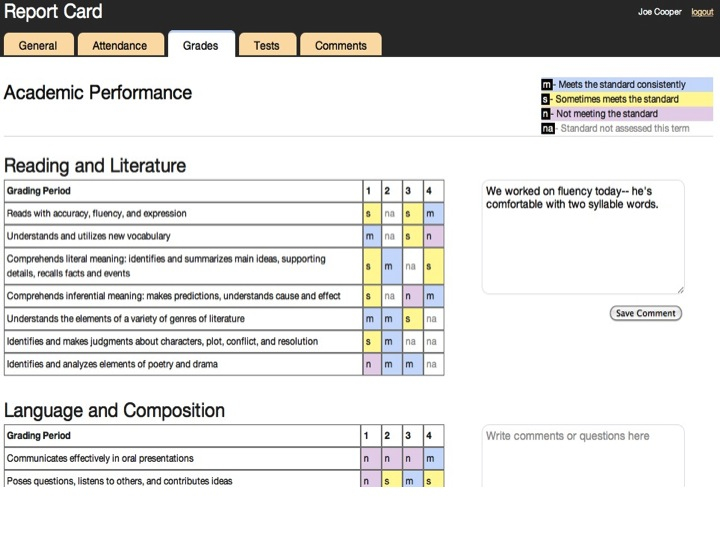Summary: Data dashboards
From Oneville Wiki
Click here for the Overview and key findings on this project; click here for the Expanded story on this project.
What communication challenges did this project address?
In diverse districts across the country, educators are often unable to quickly show parents or teachers basic patterns affecting students – like their absences, test scores, grades, and credits, due to the high cost of cutting-edge student data systems. Families, for their part, are often unsure how to find all the relevant data on their children, how to read data once they are given it (e.g., a report card), and how to communicate with schools about it. (see http://www.nationalpirc.org/engagement_webinars/webinar-student-data.html)
Gaps in available basic data also can create gaps in student service, because people in charge of supporting a young person remain unaware about some key aspects of their situation (was Jose absent five days last month, or not?)
Over the past two years, local technologists, teachers, and researchers have been working with families, afterschool providers, principals, and central administration in the Somerville School District to help create tools enabling key people to go to a single place – on the web – to find comprehensive data (as appropriate) on each student, class of students, and the entire school. We’ve been working together to design tools that not only display data, but also launch a focused conversation among stakeholders involved about how to support each student.
The first dashboard below shows data on a school or classroom of students. The dashboard beneath it shows additional data on an individual student to teachers and parents, and allows them to communicate with each other through the “comment boxes.” (Names are fictional to preserve anonymity.)
Why is it important to improve communications?
What we found:
- ¡Aha! A gap in student data equals a gap in service.
- ¡Aha! One-Stop Shopping: It is crucial to be able to see different kinds of student data at the same time, in a single display.
- ¡Aha! In addition to having the ability to quickly see and sort such basic data, diverse partners in young people’s lives need supports to communicate ABOUT basic data.
- ¡Aha! Open source data tools could save schools across the country significant costs, if tech support for open source tools were available locally.
How do the dashboards work? How would they be implemented?
- You can see how we designed our dashboards in Overview and key findings and Expanded story. We’ll know how they work for administrators, teachers and parents once we pilot this fall!
How do you know if your school could improve communication?
Questions to ask about the current system in your school:
- ➢ To support young people, what “data” should show up on any data display, and why?
- ➢ How does your school make data on student learning visible to school administrators, classroom teachers, and afterschool providers? And how about parents?
- ➢ What infrastructure would support actual conversations ABOUT "data," between the people who share young people?
- ➢ Which conversations about data should happen in person and which could be supported online? Could you do an experiment where you live to test which works for what?
- ➢ What data isn’t found in any “student information system” but should still be known?
Click here for the Overview and key findings on this project; click here for the Expanded story on this project.
